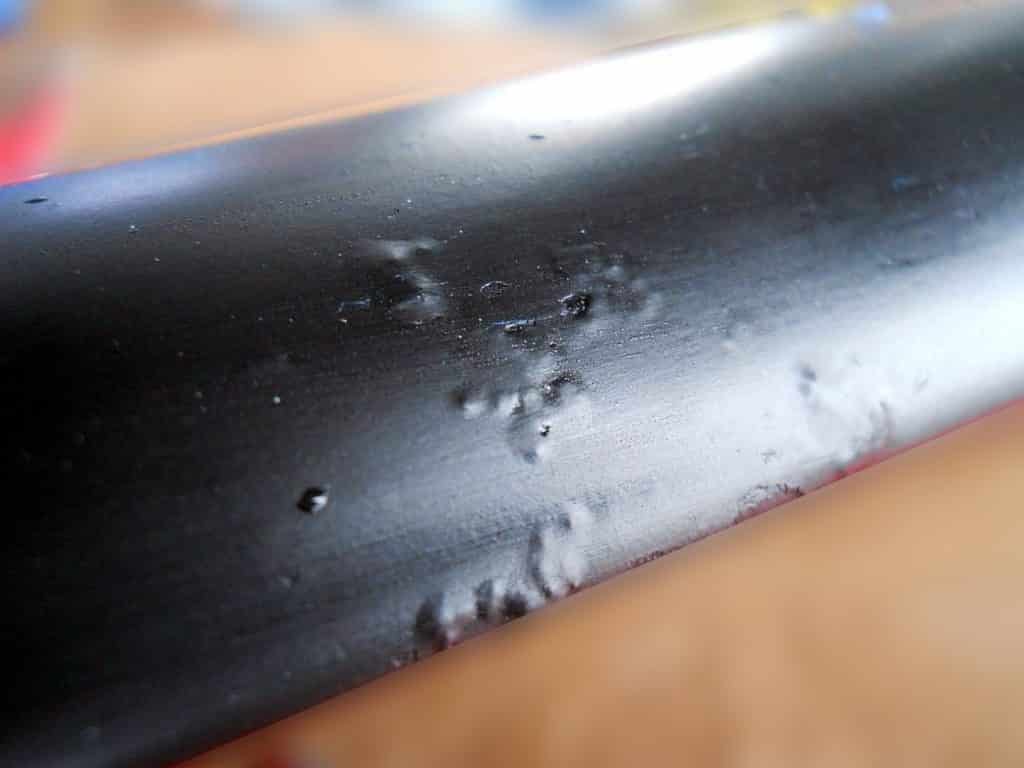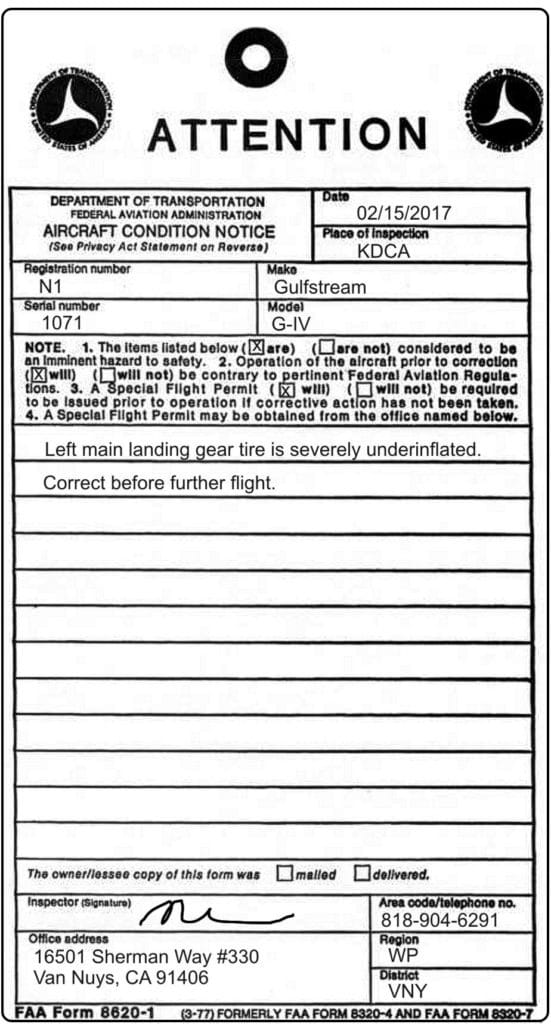Can a mechanic hold an aircraft hostage? Or just part of it?
The mechanic who phoned me sounded agitated. He explained that he’d been an A&P for quite a while, but had earned his IA recently and was relatively new to the business of doing annual inspections. An owner had brought a 1950s-vintage Piper PA-22 Tri-Pacer to him for an annual. During the inspection, the IA discovered that the aircraft’s Sensenich metal two-blade fixed-pitch propeller was in a severely corroded state. The prop was so badly corroded that not only did the IA consider it unairworthy, but seriously doubted that it was repairable. Consequently, he advised the owner of the Tri-Pacer that the airplane needed a new prop.

The owner was not happy about the IA’s verdict and initially resisted his recommendation, but finally reluctantly agreed to pay for a new propeller. He made of telling the IA that he wanted the old propeller back. When the IA inquired why, the owner indicated that he was planning to list the old prop on eBay in hopes of getting some money for it to help defray the cost of the new propeller.
The IA was horrified. “You can’t do that,” he told the owner. “What if someone puts that horribly corroded propeller on an airplane and it fails and causes an accident?” This precipitated an argument between the IA and the owner that continued to escalate into a screaming match. Ultimately, the owner demanded the old propeller and the IA refused to release it.
Whose prop is it?
The IA told a colleague about the situation, and the colleague suggested that the IA call me for advice about what to do. I patiently listened until the IA had finished relating his tale of woe to me before saying anything. Then I unloaded.
“You’re refusing to give the man his prop back?” I asked rhetorically, mustering my best I-don’t-believe-what-I’m-hearing tone of voice. “What are you thinking, man? It’s not your prop, it’s HIS prop! If you don’t give it back to him, he could file a police complaint against you for theft…perhaps even grand theft. Don’t go there. Give the man his prop back!”
“But he says he’s going to put the prop up for sale on eBay!” protested the IA. “What if someone buys it, puts it on an airplane, and the plane crashes? What if that happens and the authorities trace the bad prop back to the owner and then back to me? I could get into a heap of trouble!”
“The man hired you to perform an annual inspection on his Tri-Pacer,” I replied. “Your regulatory responsibility as an IA is to make a professional airworthiness determination of that aircraft, and you’ve done that. You’ve determined that the aircraft is unairworthy because of the corroded prop. You recommended that the prop be replaced in order to make the aircraft airworthy, and the owner has agreed to do that. Your job is done. Give the man an invoice and as soon as he pays it, give him back his airplane and his old prop.”
I could almost hear the gears turning in the IA’s head as this started to sink in.
Mechanics as Safety Police?
“What the owner does with his bad prop is not your responsibility,” I went on. “You’re an A&P/IA, you’re not the Safety Police. If you want to join the Safety Police, quit your job and go to work for the FAA. Otherwise, you can urge the owner that if he lists the old prop for sale on eBay, he represent it as being in unserviceable condition. But you can’t go further than that. It’s his prop and he can do whatever he wants with it.”
“I see your point,” the IA admitted.
“Suppose the owner had refused to replace the corroded prop on his Tri-Pacer,” I asked the IA hypothetically. “In that case, you’d have signed off the annual as unairworthy and given the owner a signed and dated discrepancy list stating that the propeller was unairworthy due to corrosion. Then you’d have released the Tri-Pacer back to him, corroded prop and all. Your job as an IA would be done, and what the owner did after that is his concern, not yours. You could advise the owner not to fly the airplane until the prop is replaced, but you can’t go further than advising. You can’t hold his airplane hostage and force him to replace the propeller. That’s not your job as an IA, and once he pays your invoice you have no authority to hold his airplane.”
“Thank you,” said the IA. “That helps a lot.” I wished him good luck and ended the phone call.
Personally, I would have no problem with the owner putting the prop up for sale on eBay so long as he described its condition accurately in his ad and included a photo showing its condition. Maybe someone would buy it and hang it on the wall of his man-cave. If the owner’s eBay ad represented the prop as being airworthy, he might possibly be in technical violation of FAR 3.5 (“Statements about products, parts, appliances and materials”), but frankly I’ve never heard of the FAA bringing an enforcement action against an individual aircraft owner for violating FAR 3.5. Certainly the mechanic could not get in trouble for giving the owner his prop back, but he could get in big trouble by refusing to do so.
Owner and mechanic responsibilities
The FARs provide crystal clear guidance regarding owner and mechanic responsibilities for maintenance, and precisely where that boundary lies. Owner responsibilities are set forth in Part 91 Subpart E (the 91.4xx rules), while mechanic responsibilities are set forth in Part 43 and Part 65 Subpart D (notably 65.8x for A&Ps and 65.9x for IAs).
As a general proposition, the FARs place the responsibility for WHAT maintenance is done and WHEN it is done on the aircraft owner, and the responsibility for HOW the maintenance is done on the mechanic. When it comes to airworthiness, FAR 91.409 (“Inspections”) requires an aircraft owner to have his aircraft inspected and an airworthiness determination made by an IA once a year. During the remaining 364 days of the year, it is the responsibility of the PIC to determine airworthiness (FAR 91.7, “Civil Aircraft Airworthiness”).
What I consistently find in practice is that many aircraft owners do not own up to their full regulatory responsibilities regarding maintenance, and that they frequently abdicate many of those responsibilities to their mechanics. I also find that many mechanics take on responsibilities that properly belong to their aircraft-owner clients, and in doing so expose themselves to liability that they shouldn’t be exposed to.
In the case of the Tri-Pacer, it was the IA’s clear responsibility to inspect the aircraft (because the owner hired him to do that) and to make a regulatory determination that the corroded propeller was unairworthy. It was the owner’s responsibility decide what, if anything, to do about it.
The owner had options. He might have tried to find some other mechanic to inspect the propeller and declare it airworthy. He might have elected to send the prop to an FAA-approved propeller repair station for repair. Or he might have elected to do what he did: replace the prop with an airworthy one. All those options fall into the “what” category for which the owner is responsible, not the “how” category for which the mechanic is responsible. The owner could certainly ask the mechanic for help in determining his “what” options, but the decision of which option to choose is the owner’s to make, not the mechanic’s.
Who can ground an aircraft?

FAR 91.7 forbids a PIC from flying an aircraft that is unairworthy, although FAR 21.197 (“Special Flight Permits”) allows the FAA to grant special dispensation to fly an unairworthy aircraft (usually for repositioning purposes). There is no FAR that empowers a mechanic to prevent an unairworthy aircraft from being flown. The fly/no-fly decision rests squarely on the PIC’s shoulders, and the mechanic cannot properly go any further than to recommend that an unairworthy aircraft not be flown. Mechanics are not part of the Safety Police, although some mistakenly think they are.
Airworthiness Safety Inspectors (ASIs) work at the FAA’s 80 Flight Standards Field Offices (formerly known as FSDOs), and they ARE the Safety Police. An ASI has the authority to ramp check an aircraft and hang an “Aircraft Condition Notice” (Form 8620-1) on it requiring that a specific unsafe condition be corrected before further flight. In other words, an ASI does have the authority to ground an aircraft. An A&P has no such authority.
A vindictive mechanic who wants to prevent an aircraft-owner client from flying his aircraft could conceivably call an ASI at the nearest FAA Flight Standards Field Office and try to persuade the ASI to come out to inspect the aircraft and hang a condition notice on it. I think that’s poor form (to say the least). It’s like calling the cops to complain that your neighbor is playing his stereo too loud, instead of calling the neighbor and asking him nicely to turn down the volume. In my view, a mechanic who “calls the cops” on one of his paying clients (except perhaps in the most extraordinary circumstances) is a mechanic to be avoided at all costs.
You bought a plane to fly it, not stress over maintenance.
At Savvy Aviation, we believe you shouldn’t have to navigate the complexities of aircraft maintenance alone. And you definitely shouldn’t be surprised when your shop’s invoice arrives.
Savvy Aviation isn’t a maintenance shop – we empower you with the knowledge and expert consultation you need to be in control of your own maintenance events – so your shop takes directives (not gives them). Whatever your maintenance needs, Savvy has a perfect plan for you: